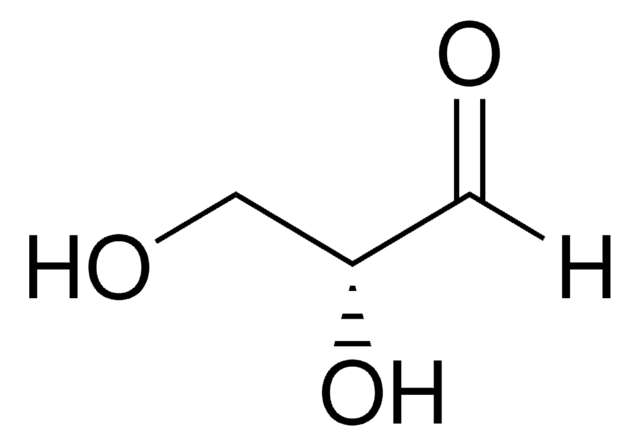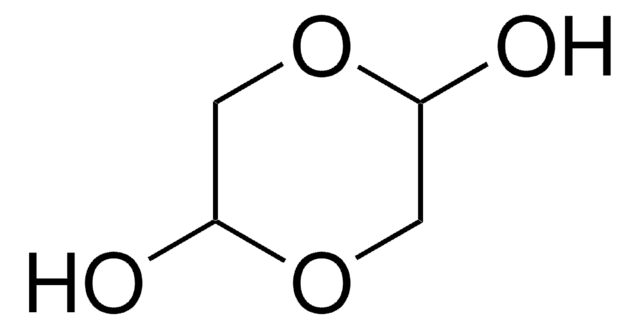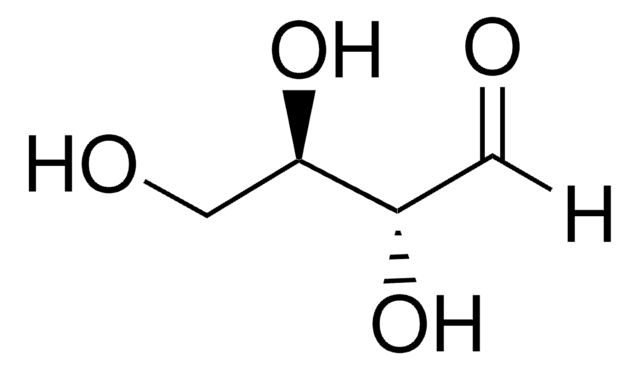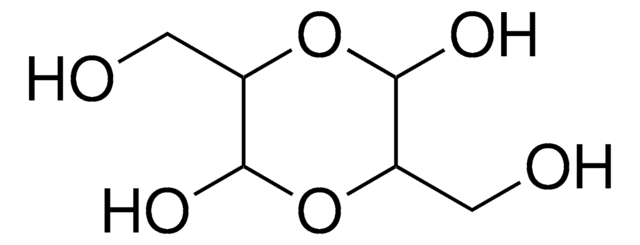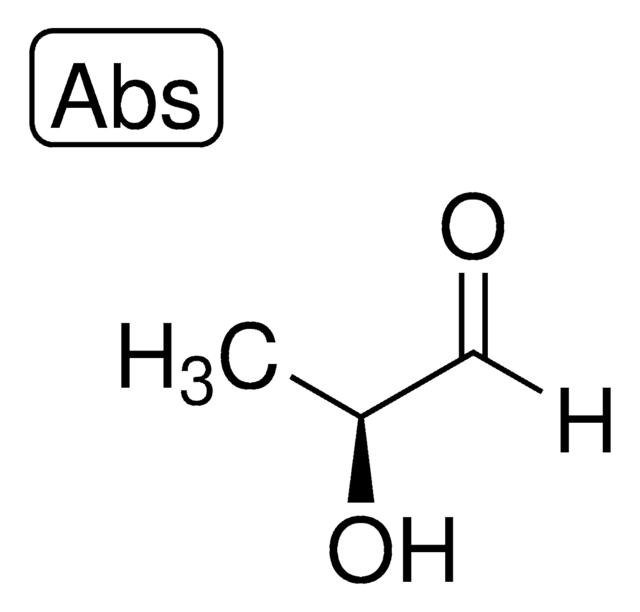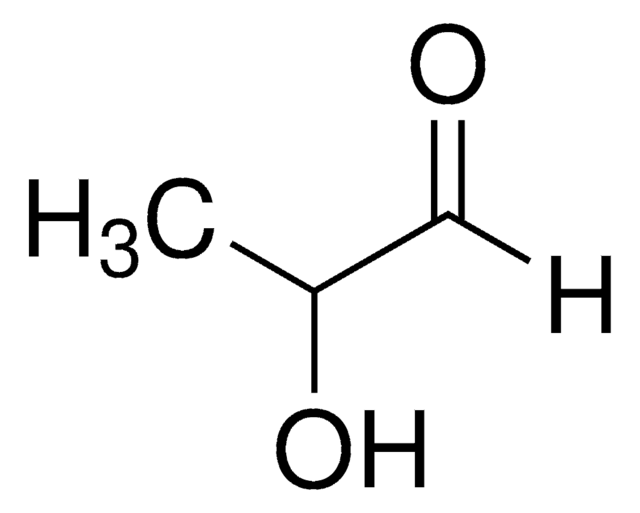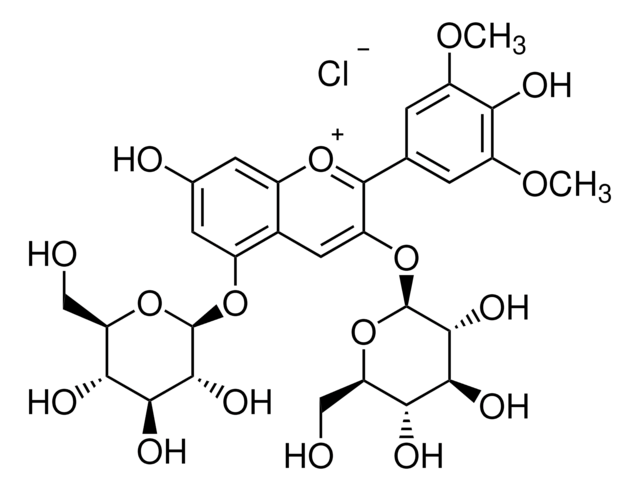Wszystkie zdjęcia(1)
Kluczowe dokumenty
73572
L-(−)-Glyceraldehyde
≥90% (HPLC)
Synonim(y):
(2S)-2,3-dihydroksypropanal
Zaloguj sięWyświetlanie cen organizacyjnych i kontraktowych
Wybierz wielkość
Wybierz wielkość
Zmień widok
About This Item
Wzór empiryczny (zapis Hilla):
C3H6O3
CAS Number:
Masa cząsteczkowa:
90.08
Beilstein:
1720475
Numer WE:
Numer MDL:
Kod UNSPSC:
12352204
Identyfikator substancji w PubChem:
NACRES:
NA.32
Polecane produkty
Poziom jakości
Próba
≥90% (HPLC)
aktywność optyczna
[α]/D -11.0±3.0°, c = 2 in H2O (after 24 h)
rozpuszczalność
water: soluble 30 g/L at 18 °C
temp. przechowywania
2-8°C
ciąg SMILES
OC[C@H](O)C=O
InChI
1S/C3H6O3/c4-1-3(6)2-5/h1,3,5-6H,2H2/t3-/m1/s1
Klucz InChI
MNQZXJOMYWMBOU-GSVOUGTGSA-N
Szukasz podobnych produktów? Odwiedź Przewodnik dotyczący porównywania produktów
Zastosowanie
- L-gliceraldehyd hamuje wzrost komórek neuroblastoma poprzez wielomodalny mechanizm metabolizmu i sygnalizacji...: Badania te podkreślają hamujący wpływ L-gliceraldehydu na wzrost komórek neuroblastoma, ujawniając jego wpływ poprzez wiele szlaków metabolizmu i sygnalizacji komórkowej (Forbes M et al., 2024).
Działania biochem./fizjol.
L-(-)-Glyceraldehyde is an important intermediate in carbohydrate metabolism.
Opakowanie
Bottomless glass bottle. Contents are inside inserted fused cone.
Inne uwagi
To gain a comprehensive understanding of our extensive range of Monosaccharides for your research, we encourage you to visit our Carbohydrates Category page.
Kod klasy składowania
10 - Combustible liquids
Klasa zagrożenia wodnego (WGK)
WGK 3
Temperatura zapłonu (°F)
233.6 °F - closed cup
Temperatura zapłonu (°C)
112 °C - closed cup
Wybierz jedną z najnowszych wersji:
Masz już ten produkt?
Dokumenty związane z niedawno zakupionymi produktami zostały zamieszczone w Bibliotece dokumentów.
Nasz zespół naukowców ma doświadczenie we wszystkich obszarach badań, w tym w naukach przyrodniczych, materiałoznawstwie, syntezie chemicznej, chromatografii, analityce i wielu innych dziedzinach.
Skontaktuj się z zespołem ds. pomocy technicznej